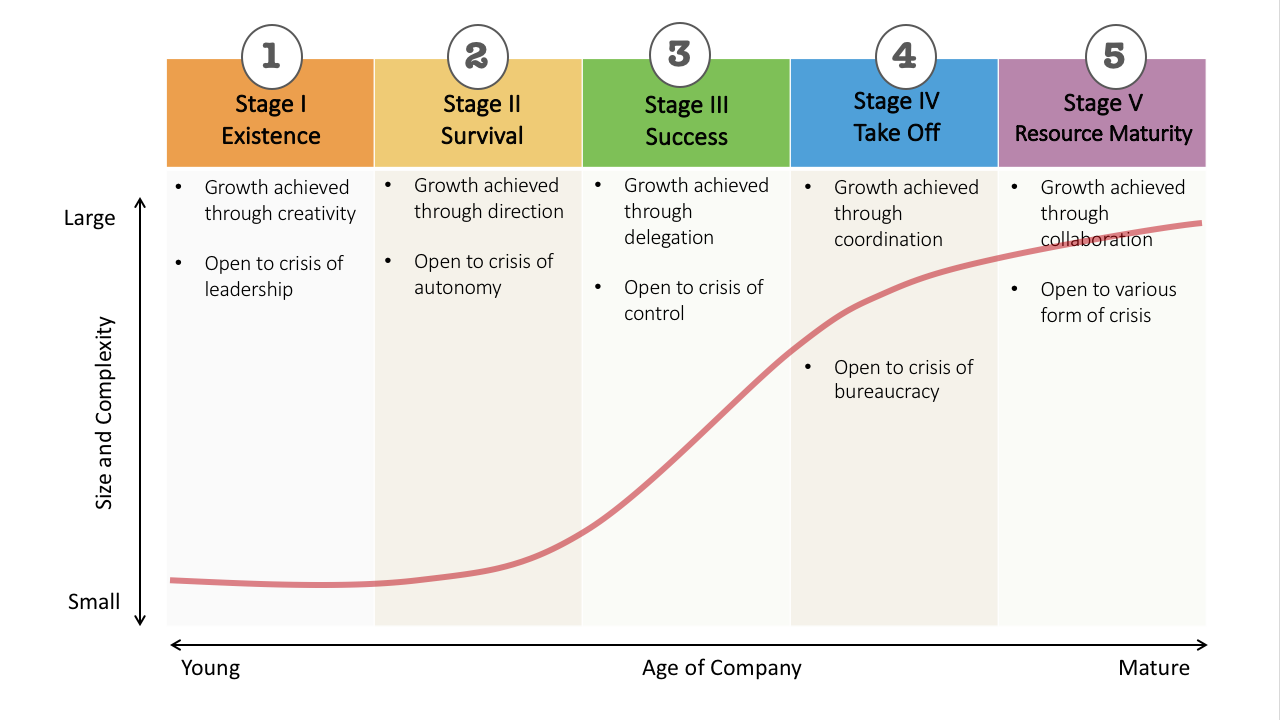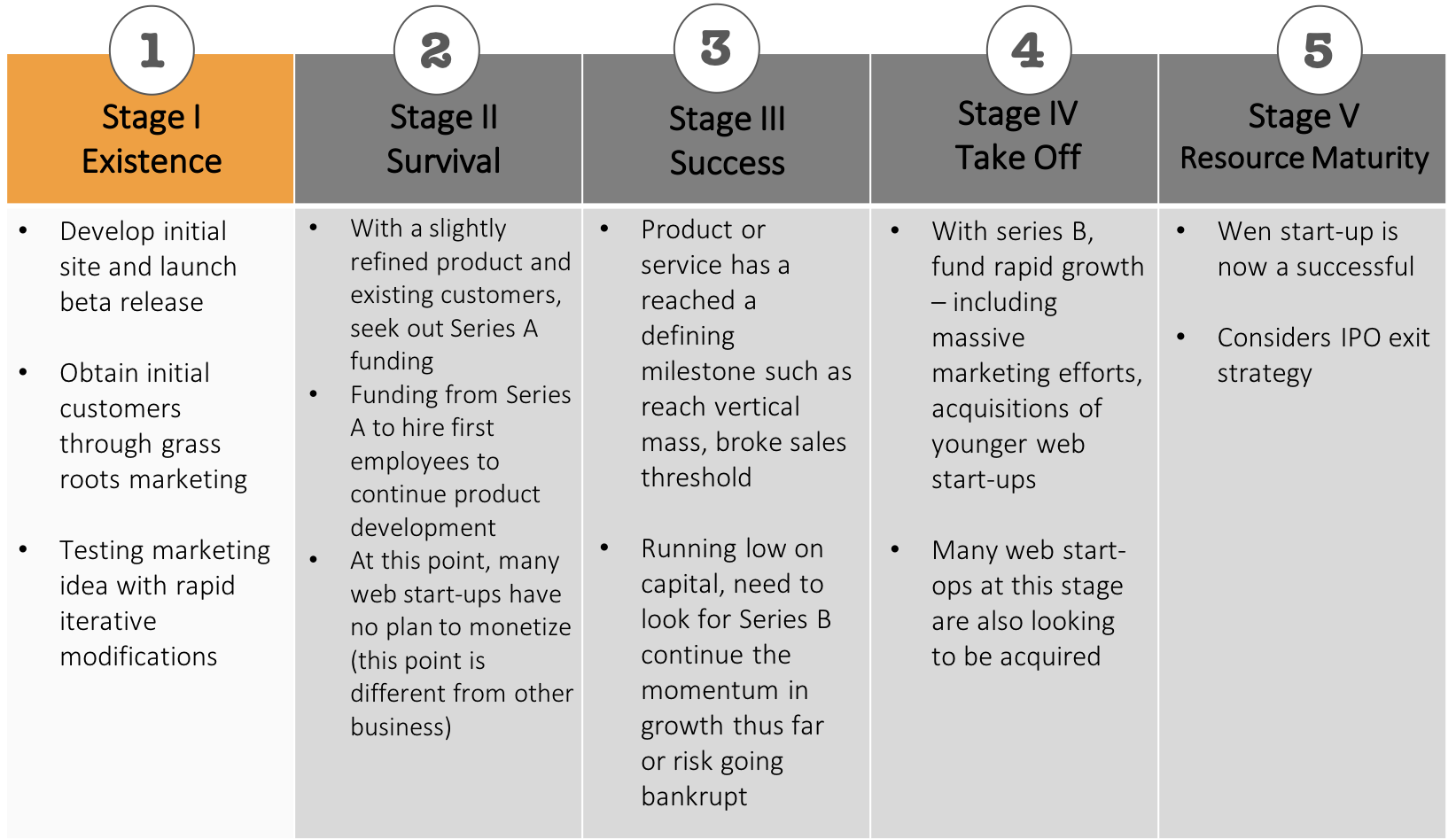
The figure by Lewis and Churchill illustrates some of the key challenges that young enterprises face as they go through various stages of growth as follow:
Stage I Existence
The significant problems of the business in this stage are gaining customers and delivering the product and services contracted for. There is only an owner who runs the business. The owner does everything and directly supervises subordinates. System is minimal and formal planning is simply to non-existent. The strategy of the organisation is simply to remain alive.
Undeniably, many companies never gain adequate customers’ acceptance or product capability to become viable. This case conducts to closing down the business since the start-up capital runs out. The company that remain in business is going to the next stage.
Stage II: Survival
Before reaching this stage, the companies have proved that their business is workable. It has sufficient customers and the products or services of the company can satisfy them. Is this stage, the main problem shifted from mere existence to the relationship between expense and revenue.
Stage III: Success
According to the given graph above, in this stage the size and complexity of the company grow rapidly. Apparently, owners are facing decision whether to exploit the company’s accomplishment or keep the company profitable and stable.
Stage IV: Take-off
The problems in this stage are how to grow and develop swiftly and how to handle with the finance for that growth.
Stage V: Resource Maturity
Obviously, this is the last and highest stage out of five that comes with the greatest concern of the company. Firstly, to strengthen and control the financial gain that rapid growth brought on. Secondly, to maintain the benefits of small size which include flexibility of response as well as the entrepreneurial spirit. The corporation need to enlarge the management force fast enough to eradicate the inefficiencies that growth can generate and apply tools as budget, strategic planning, standard cost system and management by objectives in order to professionalise to enterprise. The company must do without stifling its entrepreneurial qualities.
According to five stages of business growth, Meeting of Minds is in the stage I which is an initial phase. What we can do now are explained in the following table.

Ref:
Flevy.com (2013). Five Stages of Business Growth. [online] Slideshare.net. Available at: https://www.slideshare.net/flevydocs/five-stages-of-business-growth?next_slideshow=1 [Accessed 1 May 2018].
Churchill, N. and L. Lewis, V. (1983). The Five Stages of Small Business Growth. [online] Harvard Business Review. Available at: https://hbr.org/1983/05/the-five-stages-of-small-business-growth [Accessed 1 May 2018].
Chen, S. (2017). What Are The Stages of a Business Lifecycle and Its Challenges?. [online] Business 2 Community. Available at: https://www.business2community.com/strategy/stages-business-lifecycle-challenges-0798879 [Accessed 1 May 2018].
